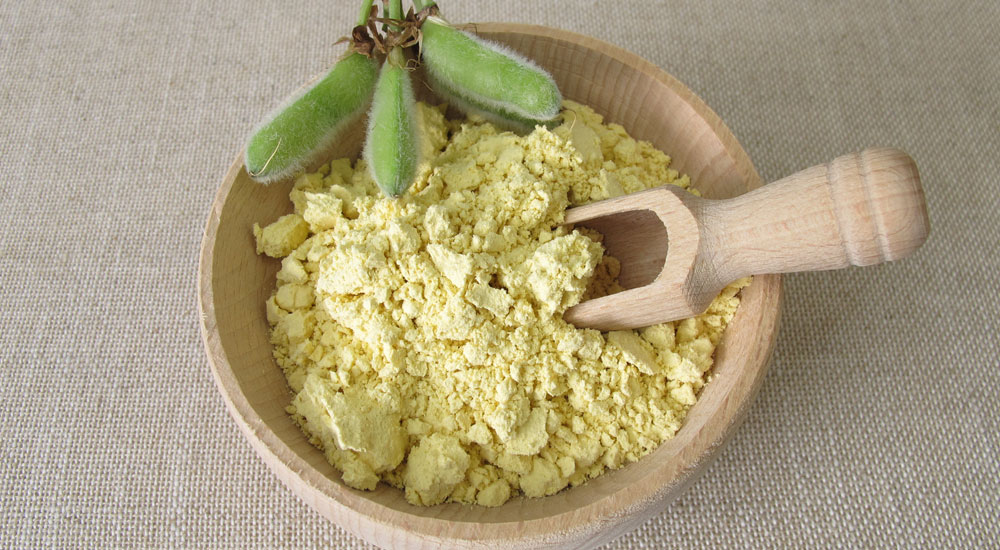
What the Heck are Lupins?
As consumers’ interest in high protein plant-based ingredients become more popular, plant-based innovations continue to grow across all categories. Now, what the heck are lupins? Lupins known scientifically as Lupinus L., or as lupine. They are legumes grown in western Australia, Europe, and the Mediterranean. Lupin is commonly eaten whole, or in flour form. Their taste has been described as similar to soybeans, yet slightly nuttier.
Lupin flour is showing up in cookies, breads and other baked goods that are innovating and reformulating to increase the protein in traditionally high carbohydrate products. This ingredient is offering gluten-free and keto- friendly flour replacement in traditional cookies, baked goods and pasta. Additionally, lupin can be made into grits, which can be used in plant-based alternative blends for meat analogues. Let’s explore more about what the heck are lupins.
 Lupins and Health
Lupins and Health
Lupins are known to be the legume that has one of the highest amounts of protein, with 100 grams containing 36 grams of protein (1). Typically other legumes or pulses like chickpeas are around 25% protein. Also, their fibre content is high at approximately 19% when other pulses like chickpeas are 10% fibre. In addition, the fibre is prebiotic. Potential health benefits of lupins include fitness health, digestive health and healthy living.
Fitness Health
Since lupin is high in protein and fairly low in carbohydrates, it is a lean protein source that can be used to increase total protein intake (2). Although this is not well explored in the scientific literature, it is worth mentioning due to the growing interest of different types of protein in the fitness and wellness industry. Lupin has the potential as a complementary protein source for muscle gain and maintenance.
Gut Health
Lupins may be beneficial for digestive wellness as they are a good source of prebiotic fibre which promotes the growth of beneficial gut bacteria (2). Lupins, specifically increase the growth of the good gut bacteria group bifidobacterium improving individuals’ resilience to foodborne illnesses such as E. Coli, Clostridium, and Salmonella (2).
Lupin’s prebiotic effect has been well noted in a nutrient analysis-based study, showing the presence of galactans and galactomannans (3). Overall, lupin shows the potential to improve gut health. However, more human trials are required to confirm the dose response relationship.
Immune Health and Healthy Living
Lupins may be beneficial to glycemic control and therefore show promising benefits for diabetes management and ultimately weight management. Lupin’s high protein, high fibre and low carbohydrate composition are valuable factors for glycemic control. A cellular culture study also demonstrated that a specific type of lupin (Lupinus angustifolius L.), up-regulates insulin signalling pathways, improving insulin sensitivity (4).
Caution
Lupin is generally safe for consumption. However, an adverse effect of lupin is the possibility of an allergic reaction. Lupin allergies are most common in people with peanut allergies or eczema (5).
What’s Next?
Lupin is also an eco-friendly choice for farmers, as they yield high amounts of nitrogen when grown (2). Overall, lupins show promising health benefits and most of these effects can be attributed to its high protein and fibre content.
Remember no single food or ingredient is a silver bullet. A lifestyle filled with healthy habits including a balanced dietary pattern, exercise and restful sleep is the best approach for long-term consistent, mind body health. If you have added lupins to your healthy diet, let me know your thoughts about the flavour, texture and how you use it!
Jane and her team would love to assist your company to strategize about the growing food trends or speak at your upcoming event! Click here to learn more.
References:
- Johnson SK, Clements J, Villarino CBJ, Coorey R. Lupins: Their Unique Nutritional and Health-Promoting Attributes. In: Gluten-Free Ancient Grains: Cereals, Pseudocereals, and Legumes: Sustainable, Nutritious, and Health-Promoting Foods for the 21st Century. Elsevier Inc.; 2017. p. 179–221.
- Lupin Foods.com » Health Benefits [Internet]. [cited 2019 Dec 3].
- Thambiraj SR, Phillips M, Koyyalamudi SR, Reddy N. Yellow lupin (Lupinus luteus L.) polysaccharides: Antioxidant, immunomodulatory and prebiotic activities and their structural characterisation. Food Chem. 2018 Nov 30;267:319–28.
- Lima-Cabello E, Alche V, Foley RC, Andrikopoulos S, Morahan G, Singh KB, et al. Narrow-leafed lupin (Lupinus angustifolius L.) β-conglutin proteins modulate the insulin signaling pathway as potential type 2 diabetes treatment and inflammatory-related disease amelioration. Mol Nutr Food Res. 2017 May 1;61(5).
- Lupin and Allergenicity Frequently Asked Questions | FDA.gov. [cited 2019 Dec 3].
Copyright © 2019 Jane Dummer | All Rights Reserved
